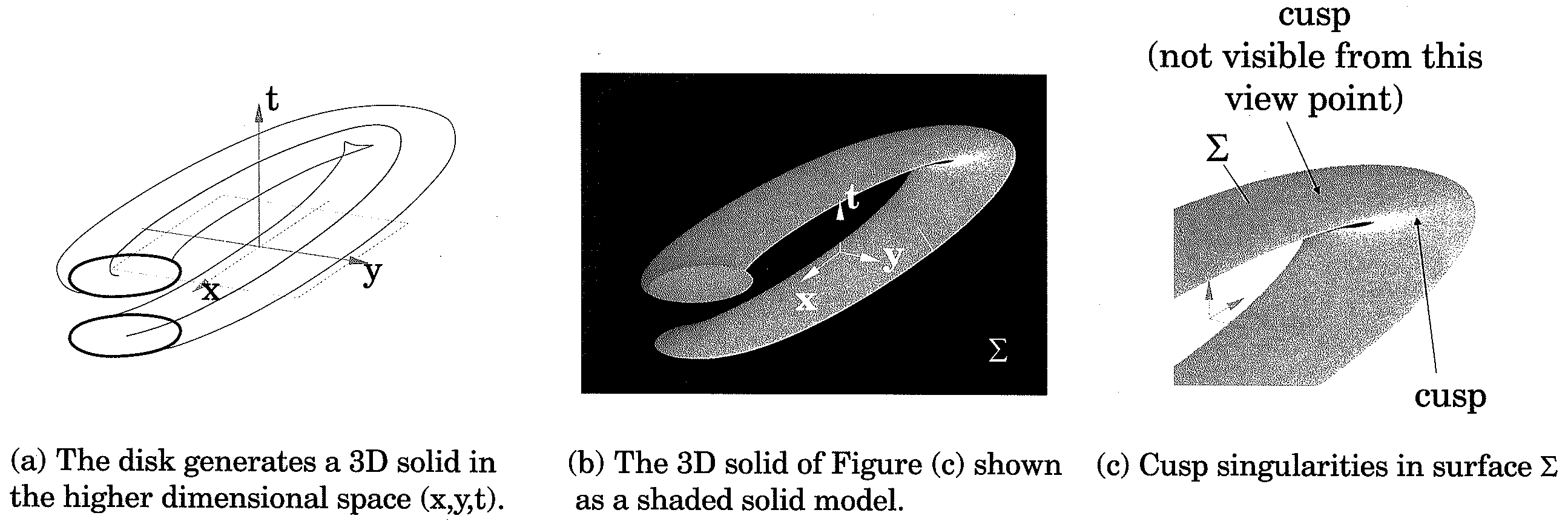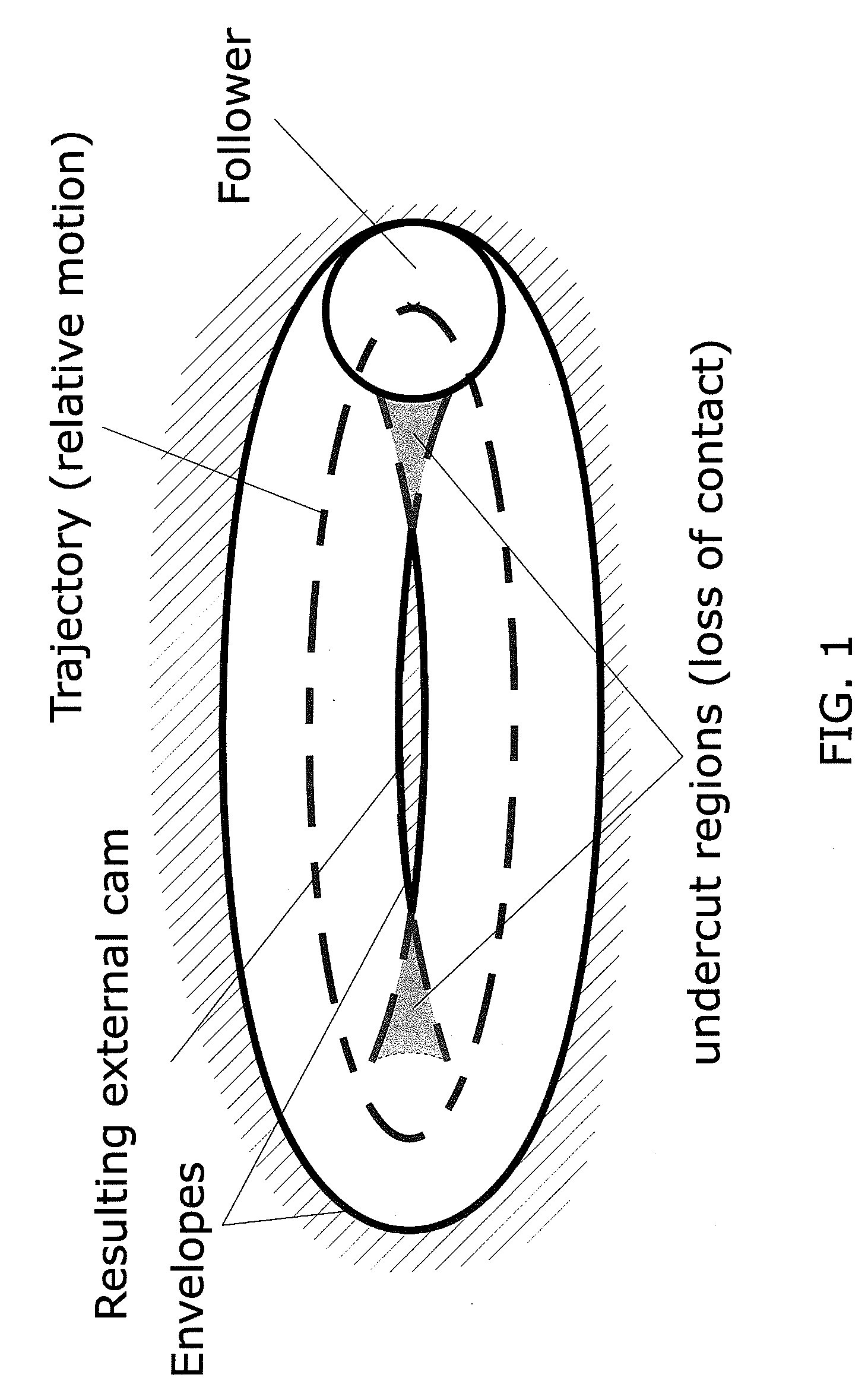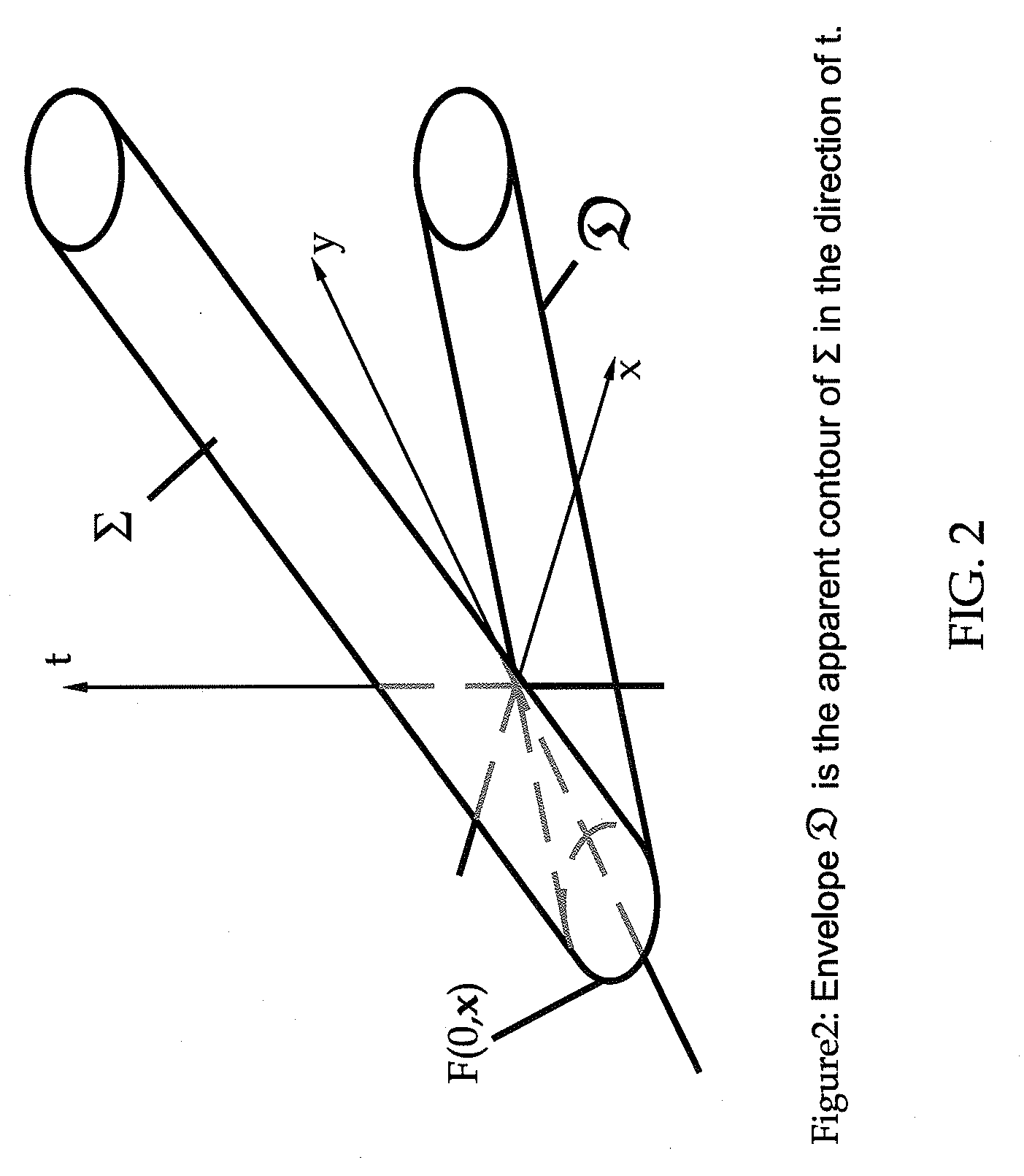Geometric Singularity Detection
a singularity detection and geometric technology, applied in the field of geometric singularity detection, can solve the problems of affecting the affecting the overall performance of the system, so as to achieve the effect of increasing the computational speed
- Summary
- Abstract
- Description
- Claims
- Application Information
AI Technical Summary
Benefits of technology
Problems solved by technology
Method used
Image
Examples
Embodiment Construction
[0039]This document describes a system and method for detecting and quantifying envelope singularities. Such system and method can be used to compute collision and interference among solid moving objects, including computing the sweeps of points of moving objects. Exemplary embodiments may also provide a system and method for performing contact analysis between a moving solid and the boundary of its swept volume.
[0040]Assume that a motion M is a one-parameter family of transformations M(t), and that parameter t belongs to the normalized unit interval. At every instant t=a, a set X moves to a new location in space determined by transformation q=M(a). The superscript notation is used to define the transformed (set of) points as Xq=XM(a)=M(a)X.
[0041]The transformation qεM(t) for some instantaneous value t=a determines the position and orientation of X relative to a fixed coordinate system. In an absolute coordinate system, every point x of X will describe a trajectory Tx={xq|qεM} in th...
PUM
 Login to View More
Login to View More Abstract
Description
Claims
Application Information
 Login to View More
Login to View More - R&D
- Intellectual Property
- Life Sciences
- Materials
- Tech Scout
- Unparalleled Data Quality
- Higher Quality Content
- 60% Fewer Hallucinations
Browse by: Latest US Patents, China's latest patents, Technical Efficacy Thesaurus, Application Domain, Technology Topic, Popular Technical Reports.
© 2025 PatSnap. All rights reserved.Legal|Privacy policy|Modern Slavery Act Transparency Statement|Sitemap|About US| Contact US: help@patsnap.com



